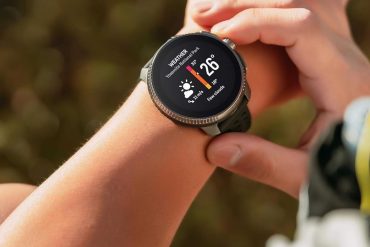New Year’s resolutions provide a fresh start and a sense of new beginnings, making them an ideal time to set goals for self-improvement. Health and fitness goals are often popular choices as they represent a commitment to taking charge of one’s well-being. A 2019 study published in the journal “Health Psychology” found that approximately 45% of Americans make New Year’s resolutions, with health and fitness goals being the most common category. Here I highlight the biggest trends in health and fitness right now.
In recent years, there has been a growing awareness of the importance of health and wellness, driven by media attention, public health campaigns, and scientific research. This increased awareness makes people more likely to prioritize their health and set goals for improvement.
The holiday season often involves overindulgence in food and drinks, leading to weight gain and feelings of lethargy. This can serve as a motivation to adopt healthier habits in the new year.
The Trends in Health and Fitness
The health and fitness industry is constantly evolving, with new trends emerging all the time. Here are some of the top trends in health and fitness that are shaping the industry in 2023:
1. Holistic health and wellness
In the realm of health and fitness, a significant trend is emerging: the embrace of holistic health and wellness. This approach deviates from the traditional focus on physical fitness alone, encompassing a broader perspective that considers the intricate connection between physical, mental, emotional, and spiritual well-being.
Proponents of holistic health and wellness believe that true well-being is achieved when these interconnected aspects of our lives are in harmony. This means nurturing our physical health through exercise and nutrition, cultivating mental clarity and emotional balance through practices like meditation and mindfulness, and nurturing our spiritual connection through meaningful pursuits and personal growth.
The adoption of holistic health and wellness practices stems from a growing recognition that our overall health is not merely the absence of disease but rather a state of optimal well-being across all dimensions of our lives. This holistic approach empowers individuals to take charge of their health, fostering a sense of self-awareness and empowering them to make informed decisions that promote their overall well-being.
The benefits of holistic health and wellness are far-reaching, extending beyond physical health improvements to encompass enhanced mental clarity, reduced stress levels, improved sleep patterns, and a greater sense of purpose and fulfillment. As individuals embrace this comprehensive approach to well-being, they unlock a path towards a healthier, happier, and more fulfilling life.
2. Wearable technology
The integration of wearable technology into the health and fitness landscape has become an undeniable trend. From fitness trackers to smartwatches, these sophisticated devices are redefining how we track our progress, optimize workouts, and connect with our bodies.
Wearable technology offers a wealth of benefits for those seeking to improve their health and fitness. By providing real-time data on metrics such as heart rate, steps taken, calories burned, and sleep patterns, these devices empower individuals to make informed decisions about their health and fitness goals. Not only can users track their progress, but they can also receive personalized insights and recommendations based on their individual data.
The impact of wearable technology extends beyond individual goals and translates into a connected fitness experience. Users can participate in fitness challenges, share their achievements with friends, and even compete in virtual fitness events. This sense of community fosters motivation and accountability, contributing to a more enjoyable and sustainable fitness journey.
Furthermore, advancements in wearable technology are opening doors to exciting new possibilities. Wearable smart clothing with integrated sensors promises to further enhance data collection and analysis, while the integration of artificial intelligence could lead to personalized coaching and fitness recommendations.
With continuous innovation and development, wearable technology is poised to play an increasingly significant role in shaping the future of health and fitness. As these devices become more sophisticated and seamlessly integrated into our lives, they offer a personalized and empowered approach to achieving individual fitness goals and optimizing overall well-being.
3. Functional fitness training
In the realm of health and fitness, a growing trend is capturing the attention of individuals seeking a more practical and holistic approach to exercise: functional fitness training. This training philosophy moves away from traditional gym-centric routines and embraces movements that mimic everyday activities, empowering individuals to perform their daily tasks with greater ease, efficiency, and resilience.
Functional fitness training focuses on compound exercises that engage multiple muscle groups simultaneously, enhancing strength, balance, flexibility, and coordination. This approach mimics the natural movements we perform daily, such as squatting, bending, pushing, and pulling, making exercise more relatable and applicable to real-life scenarios.
The benefits of functional fitness training extend beyond improved physical capabilities. By training movements that replicate everyday activities, individuals develop a sense of body awareness and control, reducing the risk of injuries and enhancing their overall well-being. This training approach also promotes mental clarity and stress reduction, as individuals gain confidence in their physical abilities and experience the positive impact of exercise on their overall health.
As functional fitness training continues to gain popularity, it is transforming the way individuals approach exercise, shifting the focus from achieving aesthetic goals to cultivating functional strength and movement patterns that enhance their daily lives. This approach empowers individuals to embrace exercise as a tool for achieving overall well-being, not just physical fitness.
4. High-intensity interval training (HIIT)
In the dynamic world of health and fitness, time constraints often pose a barrier to achieving fitness goals. However, high-intensity interval training (HIIT) has emerged as a game-changer, offering a time-efficient and effective approach to exercise. HIIT involves alternating short bursts of intense exercise with periods of rest, maximizing calorie expenditure and improving cardiovascular health in a shorter time frame.
The effectiveness of HIIT lies in its ability to elevate heart rate and oxygen consumption to high levels, triggering a cascade of metabolic benefits. This type of exercise has been shown to burn more calories in a shorter period compared to traditional steady-state cardio, making it an ideal choice for individuals seeking to maximize their fitness gains while minimizing time commitment.
HIIT’s benefits extend beyond weight management and cardiovascular health. Studies have shown that HIIT can improve muscle strength and endurance, enhance blood sugar control, and reduce inflammation. Additionally, HIIT has been associated with improved mood, reduced stress levels, and enhanced cognitive function.
As HIIT continues to gain popularity, its versatility has led to the development of various modifications and adaptations, catering to different fitness levels and preferences. From sprinting and jumping jacks to cycling and rowing, HIIT can be incorporated into a wide range of activities, making it an accessible and enjoyable exercise choice.
HIIT’s time-efficient nature, coupled with its array of health benefits, has made it a popular choice among individuals seeking to optimize their fitness in a shorter time frame. Whether you’re a seasoned athlete or a fitness novice, HIIT offers a versatile and effective approach to achieving your fitness goals.
5. Online fitness
The rapid advancement of technology has revolutionized the world of health and fitness, giving rise to the burgeoning trend of online fitness. This approach offers a convenient and accessible way to engage in exercise, breaking down traditional barriers of time, location, and equipment limitations.
Online fitness platforms provide a vast array of workout options, catering to diverse fitness levels, interests, and preferences. From high-intensity interval training (HIIT) to yoga and Pilates, individuals can access a wide range of classes, guided by experienced instructors, all from the comfort of their own homes or any location with an internet connection.
The flexibility of online fitness empowers individuals to schedule workouts around their busy lifestyles, eliminating the need to adhere to fixed gym schedules or commute to fitness centers. Additionally, online fitness platforms often provide on-demand access to workout videos, allowing individuals to exercise at their own pace and convenience.
Online fitness has also democratized access to expert fitness instruction, making professional guidance more readily available to a wider audience. Individuals can now connect with fitness instructors from around the globe, gaining access to diverse training styles and specialized knowledge. This personalized approach ensures that individuals receive tailored instruction and guidance, maximizing their fitness gains and reducing the risk of injury.
As online fitness continues to evolve, innovative technologies are further enhancing the user experience. Virtual reality (VR) workouts are emerging as a transformative force, immersing individuals in interactive and engaging fitness environments. Additionally, wearable technology can be integrated with online fitness platforms, providing real-time feedback and tracking progress, further personalizing the fitness experience.
Online fitness represents a paradigm shift in the way individuals approach exercise, offering convenience, accessibility, and personalized instruction. This trend is empowering individuals to prioritize their well-being, regardless of their location or lifestyle constraints, paving the way for a healthier and more active society.
6. Personalized fitness
In the evolving landscape of health and fitness, personalized fitness has emerged as a prominent trend, emphasizing the importance of tailoring exercise programs to individual needs and goals. This approach deviates from the “one-size-fits-all” approach of traditional fitness routines, recognizing that each individual’s fitness journey is unique and requires a customized plan for optimal results.
Personalized fitness encompasses a comprehensive assessment of an individual’s physical fitness level, medical history, lifestyle factors, and specific goals. This assessment provides valuable insights into an individual’s strengths, limitations, and areas for improvement, allowing fitness professionals to design a program that is safe, effective, and aligned with their personal objectives.
The benefits of personalized fitness extend beyond mere physical gains. By tailoring exercise programs to individual preferences and abilities, personalized fitness fosters a sense of enjoyment and engagement, increasing the likelihood of long-term adherence to physical activity. Additionally, personalized fitness programs can address specific health concerns, such as weight management, chronic disease management, and injury prevention.
The rise of wearable technology and data-driven fitness platforms has further fueled the trend of personalized fitness. These tools provide real-time feedback on an individual’s exercise performance, allowing fitness professionals to make adjustments to their programs as needed. Additionally, genetic testing and personalized nutrition counseling are becoming increasingly integrated into personalized fitness plans, providing a holistic approach to health optimization.
As personalized fitness continues to gain momentum, it is transforming the way individuals approach exercise, shifting the focus from achieving generic fitness goals to optimizing health and well-being in a way that is unique to each individual. This personalized approach empowers individuals to take charge of their fitness journey, fostering a lifelong commitment to healthy living.
7. Mental health and fitness
Another growing trend that is gaining recognition is the profound connection between mental health and physical well-being. This integrative approach acknowledges that our mental and physical states are not isolated but rather interconnected, influencing each other in a reciprocal manner.
Physical activity has been shown to have a positive impact on mental health, reducing symptoms of depression, anxiety, and stress. Exercise promotes the release of endorphins, natural mood-boosting chemicals, while also improving sleep quality and reducing inflammation, all of which contribute to enhanced mental well-being.
Mental health, on the other hand, can also influence physical health. Chronic stress, anxiety, and depression can weaken the immune system, increase susceptibility to illness, and hinder the body’s ability to heal. Addressing mental health concerns through therapy, relaxation techniques, and mindfulness practices can, in turn, promote physical well-being.
The recognition of the interconnectedness of mental and physical health has led to the development of holistic approaches to wellness. Mind-body practices such as yoga, meditation, and tai chi have gained popularity, as they integrate physical movement with mindfulness techniques, promoting both physical and mental well-being.
Additionally, mental health professionals are increasingly incorporating physical activity into treatment plans, recognizing the positive impact of exercise on mental health conditions. Healthcare providers are also collaborating more closely with fitness professionals to provide comprehensive care that addresses both physical and mental health needs.
As the understanding of the mind-body connection deepens, the trend of integrating mental health into fitness and vice versa is gaining momentum. This holistic approach to well-being empowers individuals to take charge of their overall health, fostering a sense of balance and promoting optimal well-being in all aspects of life.
8. Outdoor fitness
In the dynamic world of health and fitness, a growing trend is embracing the great outdoors: outdoor fitness. This approach to exercise seamlessly integrates physical activity with the rejuvenating benefits of nature, promoting not only physical well-being but also mental clarity, stress reduction, and a deeper connection to the natural world.
Outdoor fitness encompasses a wide range of activities, from hiking, running, and cycling to kayaking, rock climbing, and gardening. These activities provide an opportunity to explore new environments, challenge oneself physically, and appreciate the beauty of nature, all while enjoying the fresh air and sunshine.
Studies have shown that outdoor exercise offers unique benefits that extend beyond those of indoor workouts. Spending time in nature has been linked to reduced stress levels, improved mood, and enhanced cognitive function. Additionally, outdoor exercise can boost the immune system and reduce inflammation, promoting overall health and well-being.
The growing popularity of outdoor fitness is also being driven by a desire for more social and community-based exercise experiences. Group fitness classes, outdoor boot camps, and trail running groups provide opportunities to connect with like-minded individuals, share motivation, and create a sense of camaraderie.
As the trend of outdoor fitness continues to gain momentum, cities and municipalities are responding by creating more accessible and inviting outdoor spaces for exercise. Parks, trails, and bike lanes are being expanded and improved, providing more opportunities for individuals to enjoy the benefits of outdoor fitness.
Outdoor fitness offers a refreshing and holistic approach to exercise, integrating physical activity with the restorative power of nature. This trend is empowering individuals to embrace the outdoors, reap the benefits of fresh air and sunshine, and cultivate a deeper connection to the natural world, while simultaneously enhancing their physical and mental well-being.
9. Technology-enhanced fitness
Technology is playing an increasingly prominent role In the ever-evolving landscape of health and fitness, shaping the way we approach exercise, track progress, and achieve our fitness goals. This trend of technology-enhanced fitness is transforming the industry, offering personalized and data-driven solutions that empower individuals to optimize their well-being.
Wearable technology, such as fitness trackers and smartwatches, has revolutionized the way we monitor our physical activity. These devices provide real-time data on steps taken, calories burned, heart rate, and sleep patterns, allowing individuals to make informed decisions about their exercise routines and overall health.
Virtual reality (VR) and augmented reality (AR) are also making their mark on the fitness scene. VR fitness platforms immerse users in interactive and engaging virtual environments, providing a gamified and immersive exercise experience. AR fitness apps overlay digital elements onto the real world, providing real-time guidance and feedback during workouts.
Artificial intelligence (AI) is another driving force behind technology-enhanced fitness. AI-powered fitness apps can tailor workout recommendations to individual needs and preferences, providing personalized training plans that adapt as individuals progress. AI can also analyze movement patterns and provide real-time feedback to help prevent injuries and improve exercise technique.
The integration of technology into fitness has also led to the development of smart home fitness equipment. These devices, such as interactive mirrors and smart exercise bikes, provide guided workout experiences in the comfort of one’s home. They can also connect to fitness platforms and apps, allowing users to track progress and interact with virtual trainers.
Technology-enhanced fitness is not just about gadgets and apps; it also encompasses data-driven insights and personalized coaching. Fitness professionals are increasingly using data analytics to assess individual fitness levels, identify areas for improvement, and tailor training programs accordingly. This data-driven approach allows for more effective and personalized fitness interventions.
As technology continues to advance, we can expect even more innovative and personalized solutions in the realm of technology-enhanced fitness. This trend is empowering individuals to take charge of their health and fitness, providing them with the tools and resources to achieve their wellness goals in a more engaging, effective, and data-driven manner.
10. Biohacking
In the pursuit of enhanced well-being, individuals are increasingly turning to biohacking, a DIY (do-it-yourself) biology movement that involves using science, technology, and self-experimentation to optimize health and performance. This approach empowers individuals to take control of their health, seeking to understand their bodies and identify strategies to improve their physical, mental, and cognitive functions.
Biohacking encompasses a wide range of practices, from tracking sleep patterns and optimizing nutrition to exploring nootropics (cognitive enhancers) and experimenting with wearable technology. Proponents of biohacking believe that by gathering data about their bodies and experimenting with different techniques, they can identify personalized strategies to enhance their overall well-being.
One of the core principles of biohacking is self-quantification, the process of tracking and analyzing personal data to gain insights into one’s health and habits. This data-driven approach allows individuals to identify patterns, assess the effectiveness of different interventions, and make informed decisions about their lifestyle choices.
Biohacking also emphasizes the importance of personalization. Recognizing that each individual’s body and needs are unique, biohackers seek to tailor their strategies to their specific circumstances. This personalized approach contrasts with traditional one-size-fits-all health recommendations, empowering individuals to take ownership of their well-being.
While biohacking holds immense potential for improving individual health, it is essential to approach it with caution and a responsible mindset. Consulting with healthcare professionals, conducting thorough research, and exercising due diligence are crucial steps in ensuring the safety and effectiveness of biohacking practices.
Biohacking represents a paradigm shift in the way individuals approach health and wellness. By empowering individuals to take control of their bodies and experiment with different strategies, biohacking has the potential to revolutionize the way we achieve optimal well-being.
Summary
These are just a few of the many trends that are shaping the health and fitness industry in 2023. As technology continues to advance and people become more aware of the importance of health and wellness, we can expect to see even more innovative and effective ways to improve our physical and mental well-being.
Sources:
The State of Fitness Industry 2023 Report
The Global Wellness Summit 2023 Trends Report
The Worldwide Survey of Fitness Trends for 2023
















